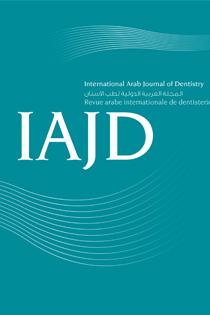Abstract
The objective of the present study was to evaluate the changes in the oropharyngeal airway depth, the hyoid bone, the tongue position and the head posture following rapid maxillary expansion assisted by laser in adult patients without any signs or symptoms of respira- tory disturbances.Adult subjects aged 16–24 years with maxillary constrictions and bilateral buccal crossbites were included in the treatment group (n = 12). A control group (n = 15) comprised subjects with normal dento-skeletal features. Expansion appliances were used in the treatment group. Lateral cephalometric radiographs were taken at two intervals: before treatment (T1) and after retention period at 3.22 months (T2).14 linear and 5 angular measurements were made in all subjects. Paired and independent t-tests were conducted to evaluate changes within and between groups. The results were evaluated within a 95% interval. The statistical significance level was established as p < 0.05.Results revealed significant increase in the length of each of the oropharynx and the tongue following treatment (p <0 .001), but no statically significant changes were found in sagittal oropharyngeal dimensions, tongue height and head posture. Also, hyoid bone posi- tion according to mandible showed significant decrease following rapid maxillary expansion (RME) (p < 0.5). The nasal pharyngeal width, the middle and the inferior parts of the oropharynx were nar- rower in RME group either pre- or post-treatment.RME helped the subject to increase vertical airway length by spon- taneous movement of the mandible.

